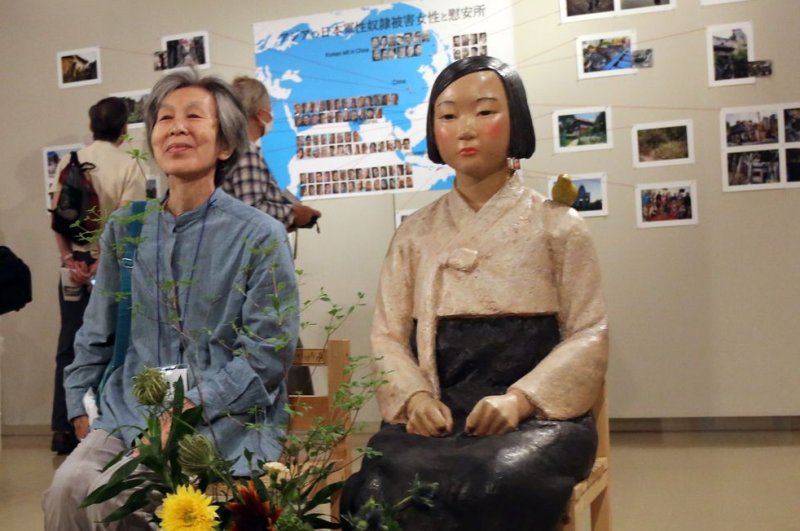HUMAN RIGHTS VS RELIGIOUS RITES
Hungary activists vow to resist LGBT law, symbol of EU rift
1 of 4
Activists pose for a photo after erecting a large rainbow-colored heart in front of the country's parliament building in Budapest, Hungary, on Thursday, July 8, 2021. The activists are protesting against the recently passed law they say discriminates and marginalizes LGBT people. (AP Photo/Laszlo Balogh)
BUDAPEST, Hungary (AP) — Activists in Hungary erected a 10-meter-high (30-foot-high) rainbow-colored heart opposite the country’s neo-Gothic parliament on Thursday, vowing to wage a civil disobedience campaign against a new law that they say discriminates against LGBT people and that has raised questions about what values the European Union stands for.
The law, which came into effect Thursday, prohibits the display of content depicting homosexuality or sex reassignment to minors — but critics say its goal is to marginalize and stigmatize the LGBT community as the country marches steadily to the right under Prime Minister Viktor Orban. The law has drawn intense opposition in Hungary and from the EU and has become a significant battleground in the fight over what the bloc represents.
Orban and some other right-wing leaders of member states have been at the forefront of that fight, challenging the EU’s traditional “liberal consensus” by refusing to accept migrants, cracking down on media plurality and limiting the independence of their judiciaries.
At the Thursday demonstration, rights groups said the Hungarian law denies thousands of LGBT young people crucial information and support, and violates national and international human rights standards.
“We think that the only path we can pursue is civil disobedience, and we will not change anything about our activities,” Luca Dudits, a spokesperson for Hatter Society, Hungary’s largest LGBT advocacy group, told The Associated Press.
One provision in the law bans organizations from holding educational programs on sexual orientation in schools unless they are approved by the government. But Dudits said Hatter Society will continue to provide teachers with training and educational materials, and offer their services to anyone regardless of age.
Dudits added that the law “stigmatizes LGBTQ people and actually puts LGBTQ youth more ... in danger of bullying and harassment in schools and in their families as well.”
Many European leaders have demanded the law’s repeal, saying it violates the bloc’s values.
European Commission President Ursula von der Leyen told the European Parliament in Strasbourg on Wednesday that the law was “a disgrace.”
In a resolution adopted Thursday, EU lawmakers condemned “in the strongest possible terms” the new legislation in Hungary and said it constitutes a clear breach of fundamental rights.
They said the law is not a one-off case, but “rather constitutes another intentional and premeditated example of the gradual dismantling of fundamental rights in Hungary.” The parliamentarians urged the European Commission to take swift action against Hungary unless it changes tack.
Speaking earlier in the day in Belgrade, Orban dismissed the EU criticisms, characterizing the controversy as a “debate about who decides how we will raise our children.”
“Brussels bureaucrats have no place here,” Orban said.
The debate over the law reflects a larger one within the 27-member EU, where a handful of countries are led by populist leaders who have pressed ahead with laws and policies that many in the bloc feel are anti-democratic or violate its founding values. On the one hand, critics of those polices want the EU to take action to protect their vision of the bloc as a progressive institution; on the other, such action raises uncomfortable questions about how much power Brussels should have over member states’ own parliaments.
Orban’s government — which next year faces elections expected to be the most competitive since his party returned to power in 2010 — is one of the faces of this rift. A champion of what he calls “illiberal democracy” and a conservative religious worldview, Orban has depicted his rejection of immigration as a fight to preserve Christian civilization, and has taken increasing control over Hungary’s higher education system in an effort to instill conservative values.
Along with Poland, Hungary’s closest EU ally, Orban has repeatedly challenged the bloc over issues like migration, corruption and the rule of law. Last year, the two countries held up passage of the EU’s budget and COVID-19 economic recovery package over provisions that would allow the withholding of payments to countries that fail to uphold democratic standards.
David Vig, director of Amnesty International Hungary which co-hosted Thursday’s demonstration, called the recent legislation “fundamentalist,” and echoed the European Parliament’s call for action against Hungary’s government, including the possible freezing billions of dollars in funding to the nation.
“We expect EU institutions to act firmly and the European Commission to start an infringement procedure ... because this is in clear contradiction not just with EU values, but also with binding EU law and the commission’s LGBTQ strategy,” Vig said.
But he said that must be done in way that “does not affect the human rights of everyday Hungarians.”























